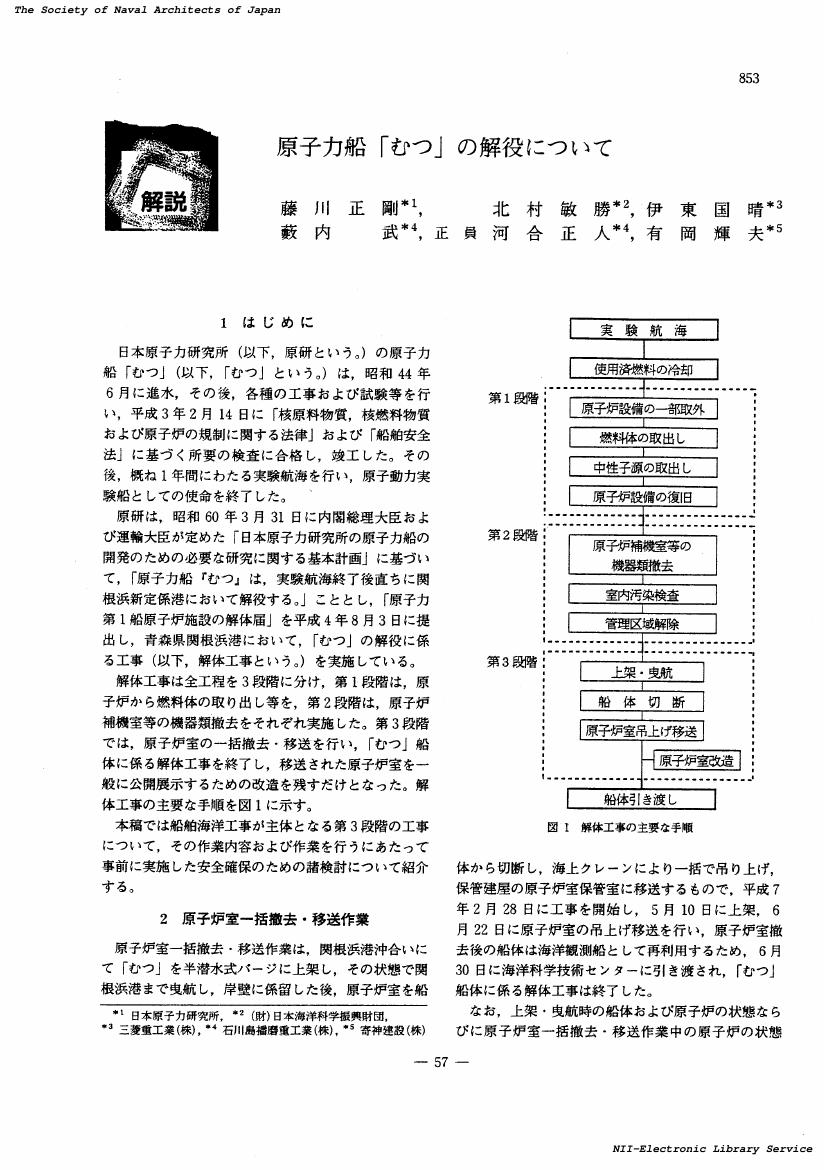130 0 0 0 OA 『斉民要術』に基づいた東アジアの古代乳製品の再現と同定
- 著者
- 平田 昌弘 米田 佑子 有賀 秀子 内田 健治 元島 英雅 花田 正明 河合 正人
- 出版者
- 日本酪農科学会
- 雑誌
- ミルクサイエンス (ISSN:13430289)
- 巻号頁・発行日
- vol.59, no.1, pp.9-22, 2010 (Released:2014-03-15)
- 参考文献数
- 27
The reproduction and identification of ancient dairy products in East Asia were conducted based on “SEIMINYOUJYUTU” which is the order ancient document available in East Asia and contains detailed explanation about milk processing, and then the spread pathway of these milk processing techniques into East Asia was discussed in this paper. As the results of reproduction and identification experiments, RAKU was identified as sour milk, KANRAKU could not be identified, ROKURAKU was identified as unmatured type cheese such as KHOROOT of Mongolian pastoralists and KURUT of Turki pastoralists, and SO was identified as butter and butter oil. Since some imprecise descriptions were found in SEIMINYOUJYUTU through the reproduction experiment, it was considered that Kashikyou, the author of SEIMINYOUJYUTU, was the just editor to use various texts which were gathered from different ethnic origins on milk processing and did not conduct processing milk products by themselves. The milk processing such as sour milk (RAKU) making from raw milk, butter (SO) making from sour milk (RAKU) by churning, butter oil (SO) making from butter by heating are wide spread techniques and still used among the current pastoralists in West Asia, South Asia, Central Asia and Inner Mongolia. As the comparison with components in milk products and the milk processing techniques of pastoralists in the Asian continent, it was concluded that the milk processing techniques adopted in SEIMINYOUJYUTU were mainly influenced from the pastoralists in North Asia and/or Central Asia.
44 0 0 0 OA 大阪市の甲虫相とその変遷
- 著者
- 初宿 成彦 安井 通宏 市川 顕彦 桂 孝次郎 河合 正人 中谷 憲一 山崎 一夫 大阪市立自然史博物館「都市の自然」調査グループ甲虫班
- 出版者
- 大阪市立自然史博物館
- 雑誌
- 自然史研究 = SHIZENSHI-KENKYU, Occasional Papers from the Osaka Museum of Natural History (ISSN:00786683)
- 巻号頁・発行日
- vol.4, no.3, pp.41-104, 2020-02-28
大阪市内の甲虫類 867 種を、市民による野外調査、標本検視、文献引用により記録した。そのう ちの 195 種がレッドリスト掲載に相当すると考えられた。これらには 1950 年代および 80 年代に消滅し たものが多い。現在、甲虫の種数は2つの大河川周辺で最も多く、ここに限定して存続しているもの、ま たかつて市街地周辺にも見られたものもある。また外来種のように新しく分布するようになったものもあ る。このような変遷の記録と概観は、稀少種のみならず、普通種を含めた多数の標本が保管されること により可能である。
- 著者
- 平田 昌弘 板垣 希美 内田 健治 花田 正明 河合 正人
- 出版者
- 公益社団法人 日本畜産学会
- 雑誌
- 日本畜産学会報 (ISSN:1346907X)
- 巻号頁・発行日
- vol.84, no.2, pp.175-190, 2013-05-25 (Released:2013-11-25)
- 参考文献数
- 28
本研究は,BC1200~BC300年頃に編纂されたVeda文献/Pāli聖典をテキストに用い,古代インドの乳製品を再現・同定し,それらの乳加工技術の起原について推論することを目的とした.再現実験の結果,dadhi/dadhiは酸乳,navanīta/navanīta・nonītaはバター,takra/takkaはバターミルク,ājya/—はバターオイル,āmikṣā/—はカッテージチーズ様の乳製品,vājina/—はホエイと同定された.sarpiṣ/sappihaはバターオイル,sarpirmaṇḍa/sappimaṇḍaはバターオイルからの唯一派生する乳製品として低級脂肪酸と不飽和脂肪酸の含有量が多い液状のバターオイルであると類推された.Veda文献・Pāli聖典は,「kṣīra/khīraからdadhi/dadhiが,dadhi/dadhiからnavanīta/navanītaが,navanīta/navanītaからsarpiṣ/sappiが,sarpiṣ/sappiからsarpirmaṇḍa/sappimaṇḍaが生じる」と説明する.再現実験により示唆されたことは,この一連の加工工程は「生乳を酸乳化し,酸乳をチャーニングしてバターを,バターを加熱することによりバターオイルを加工し,静置することにより低級脂肪酸と不飽和脂肪酸とがより多く含有した液状のバターオイルを分離する」ことである.さらに,ユーラシア大陸の牧畜民の乳加工技術の事例群と比較検討した結果,Veda文献・Pāli聖典に記載された乳加工技術の起原は西アジアであろうことが推論された.
6 0 0 0 OA アカハネオンブバッタの移入・拡散の実態と在来オンブバッタに与える影響の解明
移入種であるアカハネオンブバッタの分布が、阪神地域から周辺地域へ拡大する様子が市民調査(738件の分布情報)を通して詳細に記録された。本種の自然分布域である中国、台湾、南西諸島と、移入したことが知られているハワイ諸島のサンプルとの、ミトコンドリアおよび核遺伝子の部分配列の比較により、移入した個体群の一部は少なくとも中国からのものと推定された。オンブバッタとの交尾実験では交雑個体の発生は見られなかったが、それぞれのオスの異種メスへのマウント行動は普通に見られ、アカハネオンブバッタの存在はオンブバッタの繁殖干渉を通して、正常な交尾を妨げる負の影響を与えている可能性が推測された。
5 0 0 0 原子力船「むつ」の解役について
- 著者
- 藤川 正剛 北村 敏勝 伊東 国晴 藪内 武 河合 正人 有岡 輝夫
- 出版者
- 公益社団法人日本船舶海洋工学会
- 雑誌
- Techno marine : bulletin of the Society of Naval Architects of Japan : 日本造船学会誌 (ISSN:09168699)
- 巻号頁・発行日
- no.797, pp.853-857, 1995-11
- 参考文献数
- 2
2 0 0 0 OA 原子力船「むつ」の解役について
- 著者
- 藤川 正剛 北村 敏勝 伊東 国晴 藪内 武 河合 正人 有岡 輝夫
- 出版者
- 公益社団法人 日本船舶海洋工学会
- 雑誌
- Techno marine 日本造船学会誌 (ISSN:09168699)
- 巻号頁・発行日
- vol.797, pp.853-857, 1995 (Released:2018-02-25)
2 0 0 0 OA 異なる色彩の牛衣を装着した放牧牛へ飛来する双翅目昆虫数と牛の身繕い行動
- 著者
- 近藤 誠司 佐々木 均 田辺 堅太郎 市本 愛子 河合 正人 清水 弘
- 出版者
- 北海道大学農学部附属牧場
- 雑誌
- 北海道大学農学部牧場研究報告 (ISSN:03856097)
- 巻号頁・発行日
- vol.16, pp.37-43, 1997-08-14
- 著者
- 平田 昌弘 板垣 希美 内田 健治 花田 正明 河合 正人
- 出版者
- 日本畜産学会
- 雑誌
- 日本畜産學會報 = The Japanese journal of zootechnical science (ISSN:1346907X)
- 巻号頁・発行日
- vol.84, no.2, pp.175-190, 2013-05-25
- 参考文献数
- 28
本研究は,BC1200~BC300年頃に編纂されたVeda文献/Pāli聖典をテキストに用い,古代インドの乳製品を再現・同定し,それらの乳加工技術の起原について推論することを目的とした.再現実験の結果,dadhi/dadhiは酸乳,navanīta/navanīta・nonītaはバター,takra/takkaはバターミルク,ājya/—はバターオイル,āmikṣā/—はカッテージチーズ様の乳製品,vājina/—はホエイと同定された.sarpiṣ/sappihaはバターオイル,sarpirmaṇḍa/sappimaṇḍaはバターオイルからの唯一派生する乳製品として低級脂肪酸と不飽和脂肪酸の含有量が多い液状のバターオイルであると類推された.Veda文献・Pāli聖典は,「kṣīra/khīraからdadhi/dadhiが,dadhi/dadhiからnavanīta/navanītaが,navanīta/navanītaからsarpiṣ/sappiが,sarpiṣ/sappiからsarpirmaṇḍa/sappimaṇḍaが生じる」と説明する.再現実験により示唆されたことは,この一連の加工工程は「生乳を酸乳化し,酸乳をチャーニングしてバターを,バターを加熱することによりバターオイルを加工し,静置することにより低級脂肪酸と不飽和脂肪酸とがより多く含有した液状のバターオイルを分離する」ことである.さらに,ユーラシア大陸の牧畜民の乳加工技術の事例群と比較検討した結果,Veda文献・Pāli聖典に記載された乳加工技術の起原は西アジアであろうことが推論された.
1 0 0 0 OA 大阪府地衣類資料Ⅲ. 箕面公園(箕面市)の地衣類相および興味深い2種について
- 著者
- 山本 好和 高萩 敏和 坂東 誠 河合 正人
- 出版者
- 大阪市立自然史博物館
- 雑誌
- 大阪市立自然史博物館研究報告 = Bulletin of the Osaka Museum of Natural History
- 巻号頁・発行日
- vol.73, pp.107-114, 2019-03-31
近畿地方の地衣類相を明らかにする一環として,北摂山系の南山麓に位置する箕面市箕面公園を調査し,ホシゴケ綱およびチャシブゴケ綱,ホソピンゴケ綱,ユーロチウム菌綱に属する18科38属54種を確認した.ツブレプラゴケとザクロゴケの2種が近畿地方で初めて確認された.
1 0 0 0 OA 韓国済州島における在来馬およびサラブレッドの飼養状況調査
- 著者
- 河合 正人
- 出版者
- 帯広畜産大学後援会
- 雑誌
- 帯広畜産大学後援会報告
- 巻号頁・発行日
- vol.30, pp.25-29, 2002-04-30
助成番号538
1 0 0 0 『斉民要術』に基づいた東アジアの古代乳製品の再現と同定
- 著者
- 平田 昌弘 米田 佑子 有賀 秀子 内田 健治 元島 英雅 花田 正明 河合 正人
- 出版者
- 日本酪農科学会
- 雑誌
- ミルクサイエンス (ISSN:13430289)
- 巻号頁・発行日
- vol.59, no.1, pp.9-22, 2010
The reproduction and identification of ancient dairy products in East Asia were conducted based on "SEIMINYOUJYUTU" which is the order ancient document available in East Asia and contains detailed explanation about milk processing, and then the spread pathway of these milk processing techniques into East Asia was discussed in this paper. As the results of reproduction and identification experiments, RAKU was identified as sour milk, KANRAKU could not be identified, ROKURAKU was identified as unmatured type cheese such as KHOROOT of Mongolian pastoralists and KURUT of Turki pastoralists, and SO was identified as butter and butter oil. Since some imprecise descriptions were found in SEIMINYOUJYUTU through the reproduction experiment, it was considered that Kashikyou, the author of SEIMINYOUJYUTU, was the just editor to use various texts which were gathered from different ethnic origins on milk processing and did not conduct processing milk products by themselves. The milk processing such as sour milk (RAKU) making from raw milk, butter (SO) making from sour milk (RAKU) by churning, butter oil (SO) making from butter by heating are wide spread techniques and still used among the current pastoralists in West Asia, South Asia, Central Asia and Inner Mongolia. As the comparison with components in milk products and the milk processing techniques of pastoralists in the Asian continent, it was concluded that the milk processing techniques adopted in SEIMINYOUJYUTU were mainly influenced from the pastoralists in North Asia and/or Central Asia.
